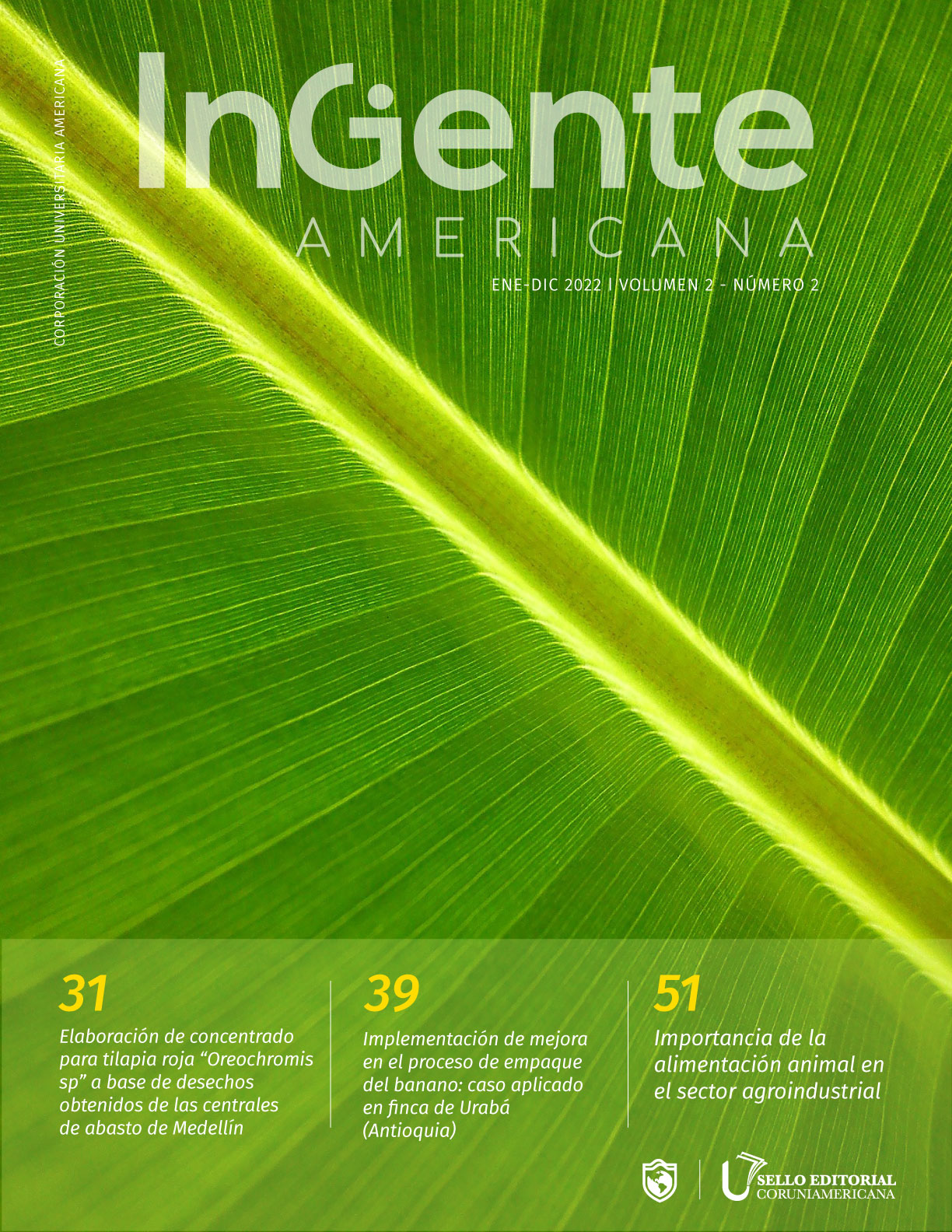Preparation of concentrate for red tilapia "Oreochromis sp" based on waste obtained from Medellín's central supply centers.
DOI:
https://doi.org/10.21803/ingecana.2.2.399Keywords:
Animal Food, Plant Waste, Red Tilapia, Supply CentersAbstract
The present research thesis offers to generate a new fish feed, particularly for the Red Tilapia "Oreochromis sp", from the vegetable residues that are produced in the central supply plants, which are causing damage to the environment by their growth in the landfills; Therefore, this concentrate seeks to provide the diet with better opportunities in cost, quantity of vitamins, minerals, fatty acids which are important for the growth of fish, providing an improvement in the nutritional table in order to obtain a better quality product in terms of size, texture and color, aspects that are important for human consumption.
The idea of developing a new concentrate arose to mitigate the waste that is generated daily, and to improve the concentrate that is currently provided to the fry, since there is an unbalanced diet and delayed growth that is affecting their development, which leads to not supplying the growing demand for this food. To carry out the development of the new food diet, it is necessary
to carry out statistical studies, laboratory tests of measurement and observation, identifying the adequate behavior of the fry, which seeks to adapt technical specifications that generate reliability in the people who are dedicated to the work of fish farming in Medellin.
Downloads
References
M. Merino, S. Bonilla y F. Bages, «Diagnóstico del estado de la acuicultura en Colombia» RM Gráficos, 2013.
G. Jaramillo Henao y L. M. Zapata Márquez, «Aprovechamiento de los residuos sólidos orgánicos en Colombia» 2008. [En línea]. Disponible en: http://tesis.udea.edu.co/bitstream/10495/45/1/AprovechamientoRSOUenColombia.pdf.
R. Rodríguez Ramírez, «La central de abastos “ José Maria Jiménez “ de Saltillo, Coahuila. Evolución y perspectivas de la distribución de frutas y hortalizas.,» 06 2008. [En línea]. Available: http://repositorio.uaaan.mx:8080/xmlui/bitstream/handle/123456789/3598/T16713%20%20RODRIGUEZ%20RAMIREZ,%20ROSALVA%20TESIS.pdf?sequence=1.
S. Maya Henao, «Procesos de producción de alimentos balanceados - Planta de Concentrados Colanta Itagüí,» 2016. [En línea]. Available: http://repository.lasallista.edu.co/dspace/bitstream/10567/1492/1/Procesos_Produccion_Alimentos_balanceados_COLANTA.pdf.
J. Pokniak, «Nutrición de peces,» TecnoVet,3:2. Facultad de Ciencias Veterinarias y Pecuarias, Universidad de Chile., 1997.
D. Torres Novoa y V. Hurtado Nery, «Requerimientos nutricionales para Tilapia del Nilo (Oreochromisniloticus),» Orinoquia - Universidad de los Llanos - Villavicencio, Meta. , 2012.
M. Moreno, J. Hernández, R. Rovero, A. Tablante y L. Rangel, «Alimentación de tilapia con raciones parciales de cáscaras de naranja,» CYTA Journal of food, pp. 29-33, 2009.
E. Castillo, Y. Acosta, N. Betancourt, E. Castellanos, A. Matos, V. Cobos y M. Jover, «Utilización de pulpa de café en la alimentación de alevines de tilapia roja,» Aquatic, 2002.
Downloads
Published
Issue
Section
License
Copyright (c) 2022 Ingente Americana

This work is licensed under a Creative Commons Attribution 4.0 International License.






